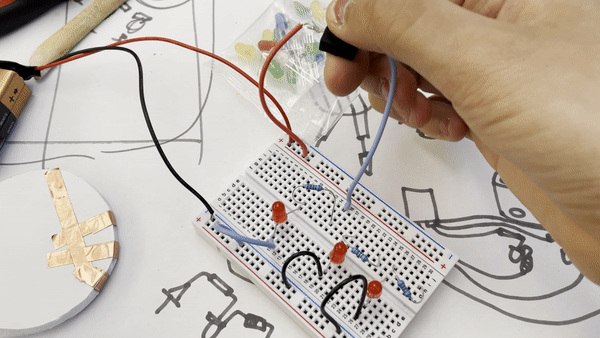Pull-Apart Toaster 🍞
A look into designing consumer electronics and exploring our intimate interactions with everyday objects. How does changing the interaction affect a toaster's form language and our perceptions of its utility?
Skills and Tools
Rapid Prototyping
Physical Modelling
Solidworks
PLA 3D Printing
Keyshot
Duration
3 weeks (April 2022- May 2022)


.png)
.png)
.jpg)
.jpg)
.jpg)
CMF Explorations
Greyform Model
3D printed with PLA filament. To show functionality, LED lights were also wired, soldered, and inserted into the model so they switch on and off when button is pressed.

Inserting Bread
Lift the toaster up from its charging stand and pull it apart.
Turn the knob to adjust for toasting time and press it down to start the timer. An LED lights up along the rim to show heating

Removing Toast
Once the timer is done, it will ring to let you know to remove the toast.
Slide out the toast onto a plate and protect your finger from the heat. Now enjoy your toast as you please!


Charging
Stand
Charging
When not in use, the toaster sits on a small charging stand that can plug into the wall. This ensures that it has enough electricity when needed for portability.
What does a single-slice toaster look like? How does a single-slice toaster work like?
I sketched some initial ideas and analyzed current toasters on the market to identify basic forms and interactions
.png)

The Eureka! Moment
Why should a toaster be pulled apart?
1. It protects the hands from heat
2. It encourages more mindfulness with our everyday objects
3. It feels like pulling apart a grilled-cheese sandwich, what a fun snack!
Exploring form and fit
Using foam, I explored different proportions for best grip and size before switching to 3D printing so I can try out mechanisms for how the toaster actually pulls apart


How could I mimic the operations of a real toaster?

Using LEDs, conductive tape, switches, and soldering, I achieved a working circuit for demonstrating lighting functions.
1. LEDs light up when the button to start toasting is pressed
2. Progressive LEDs for adjusting toasting time by turning the knob
Electronics



As for the charging station, I looked at existing stands for inspiration and sketched out some initial ideas.
The charging stand tilts and elevates the toaster so that it is easier to grab and lift.


Reflections and Thoughts
What is a single-slice toaster? How is it similar and different from a regular retail toaster?
The flexibility and constraints of this project were very interesting to work with. I had fun thinking about these questions and felt that I was learning something new from beginning to end.
If there was something to improve on, I would have liked to reduce the toaster's size. Due to the electronics' size constraints, adjustments had to be made. I would have also enjoyed playing more with the form and exploring more details within the interactions.

